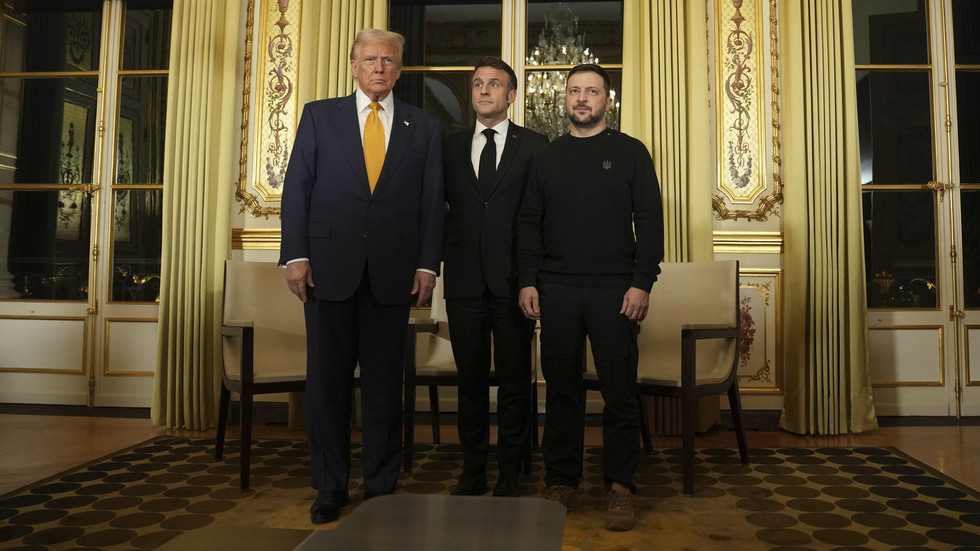Last week, a significant meeting took place between US President-elect Donald Trump, Ukrainian President Volodymyr Zelensky, and French President Emmanuel Macron in Paris, focused on addressing the ongoing crisis between Ukraine and Russia. Reportedly, Trump expressed a desire for a prompt cessation of hostilities, diverging from the U.S.’s previous stance of actively supporting Ukraine in the conflict. In the aftermath of the talks, Trump relayed that Ukraine was interested in negotiating a deal to end the conflict. However, President Zelensky firmly reiterated that any negotiations must first center around securing strong assurances for Ukraine’s safety and sovereignty, explicitly rejecting the idea of territorial concessions to Russia.
During the 35-minute private discussion, devoid of advisers, sources indicated that Trump maintained a “friendly, respectful and open” demeanor and seemed focused on building a personal rapport with both Zelensky and Macron. Despite the apparent congeniality, the specifics of a potential peace strategy were not delved into during the conversation. Rather, Trump advocated for an immediate ceasefire and swift negotiations aimed at concluding the conflict. Still, there was little clarity on how Trump and his administration envisioned an effective resolution moving forward, a point stressed by multiple sources familiar with the meeting.
An important issue raised by the Ukrainian side centered on security guarantees, aimed at thwarting any potential resurgence of hostilities once a ceasefire is instituted. Although Trump was reportedly engaged and considering the finer points of these security measures, the lack of detailed proposals from his team on their intended approach to resolving the conflict raised concerns. Zelensky’s insistence on these guarantees underscores Ukraine’s wariness of the implications of previous negotiation attempts that may have resulted in territorial losses.
Trump’s pledges during his campaign, including his intentions to act decisively to resolve the Ukraine conflict, indicate a shift toward prioritizing diplomatic solutions over military support for Ukraine going forward. To bolster his approach, Trump has also announced plans to appoint retired Army General Keith Kellogg as a special envoy to oversee matters concerning Ukraine and Russia. This move follows Kellogg’s involvement in drafting a controversial peace plan that would aim to halt the conflict while maintaining the status quo along the current front lines, all without yielding any recognition of Russian claims over Ukrainian territories.
Conversely, Russia has maintained a hardline stance throughout this conflict, insisting that its military objectives—such as Ukraine’s declared neutrality and demilitarization—must be fully achieved. President Vladimir Putin has laid out preconditions for a ceasefire, demanding the withdrawal of Ukrainian troops from Russian-claimed territories, including key regions such as Donetsk, Lugansk, Kherson, and Zaporozhye. This stark divergence in positions between Moscow and Kyiv complicates any potential negotiation process and emphasizes the substantial challenges ahead as both sides seek to navigate their respective demands.
In summary, the recent discussions among Trump, Zelensky, and Macron have brought to light the complexities of the conflict. While there is a mutual desire for a reduction in hostilities, underlying factors, such as security guarantees and territorial integrity, remain contentious points. The path to peace requires navigating through these intricate issues, with ongoing engagement from international partners playing a crucial role in determining future outcomes. As Trump prepares to take office, how he reconciles these competing objectives will be critical in shaping the landscape of Ukrainian-Russian relations in the months to come.

